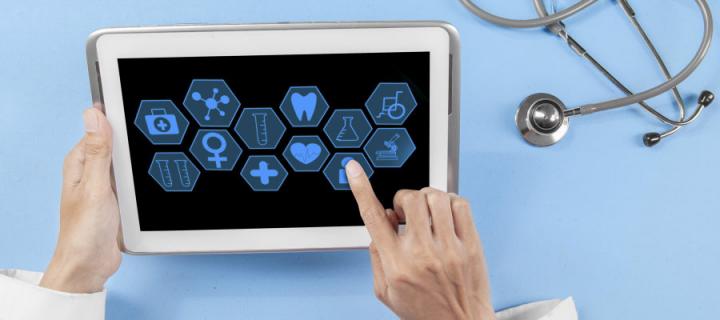Televent
Exploratory pilot trial of telemetric monitoring of patients with long term ventilation needs.
Background
People with a number of diseases and conditions, for example neuromuscular disease, chronic obstructive pulmonary disease and obesity, on long term ventilation in the community are looked after by the Lothian Long Term Ventilation Service. This service involves patients visiting hospital and nurses visiting patients in their homes.
The appropriate use of technology could:
- enhance interaction between patient and the clinical team
- improve the information provided to the clinical team upon which to make decisions enabling patients to be cared for at home
- reduce the travel time for both patients and clinicians

Aim
The aim of the Televent project was to assess the feasibility of this approach with patients with long term ventilation needs.
The system being used in this feasibility study was the Mobile Health Network Data Acquisition Platform (MHN-DAP). The MHN-DAP is a monitoring system that allows the Long Term Ventilation (LTV) clinical team to assess patients' wellbeing through remotely reviewing data from their home ventilators and pulse oximeters as well as through remote consultation via video conferencing.
The project assessed:
- the efficacy of treatment
- the impact on triage of patients in response to unexpected events
- the effect on frequency and number of unexpected events
- the impact on travel, both of the clinical team and patient
Method
Mixed methods study:
- Quantitative data from health records and clinical logs to establish impact of intervention on service provision.
- Qualitative interviews to establish patient and clinical staff expectations, experience and acceptability of the intervention.
Collaboration
The study was initiated by the NHS Lothian Clinician responsible for the LTV service and there has been close collaboration between the NHS clinical team, NHS strategic planning, the manufacturer and research team.
The close collaboration has resulted in clinical team input to the design of the device and user manuals.
Collaboration has also facilitated the testing of the device, and establishing the most cost effective method of enabling the videoconference aspect of the study.
Results
We arranged individual interviews with patients (who were using long term ventilation) and healthcare professionals (from the long term ventilation care team) at the start of the project and again at the end. We interviewed 12 patients/7 healthcare professionals at the start of the study and 6 patients/4 healthcare professionals again at the end. The interviews were recorded and analysed to identify themes.
We collected information from the healthcare professionals about when they had used the telemonitoring. We also collected information from patient’s medical notes to find out about visits to hospital and their GP that was about their ventilation needs.
Key results
Telemonitoring was generally viewed by participants as a positive development for the future.
The telemonitoring system used in the study was not easy to use, the device was too big and frequently stopped working or was slow to display on the computer screen. At the same time the number of healthcare professionals was reduced which resulted in an increased workload for remaining staff. As a result, healthcare professionals did not routinely monitor the data.
Where the telemonitoring system was used patients and healthcare professionals found it beneficial to their relationship although it may increase the workload of healthcare professionals and may be intrusive for some patients.
The system could be improved by making the device smaller, perhaps incorporated into the ventilator and easier to set up. Participants said they would like a system that could send alerts to healthcare professionals when they were unwell and that patients could access themselves to monitor their own progress. Healthcare professionals would like more training and time to use the system.
Patients highlighted the importance of the NHS sharing their information and ensuring telemonitoring was available to all patients with long term ventilation needs who might benefit. Telemonitoring for people with long term ventilation needs may be most useful to spot problems over time rather than when a patient is very unwell. Participants remained positive about using telemonitoring in the future.
When healthcare professionals were able to use the telemonitoring system it led to action being taken on half of the occasions but also prevented about the same number of actions. Dealing with technical issues took up a lot of healthcare professional time. Patient visits to A&E, hospital stays and GP visits did not change compared to a year earlier, but they did have more contact with the long term ventilation team.
Conclusions
We found that telemonitoring for people with long term ventilation needs may be beneficial but there are also some drawbacks. The system needs further development and testing.
| Funder | Digital Health Institute |
| Chief Investigator | Professor Brian McKinstry |
| Co-applicants | Dr Anthony Bateman, Grahame Cumming, Rahnuma Hassan |
| Researcher | Jill Hall |


